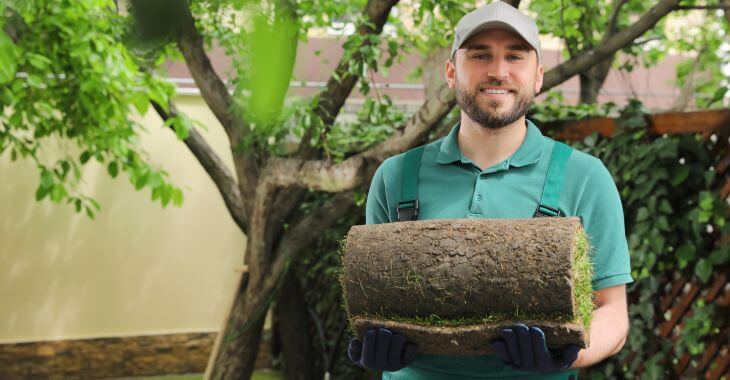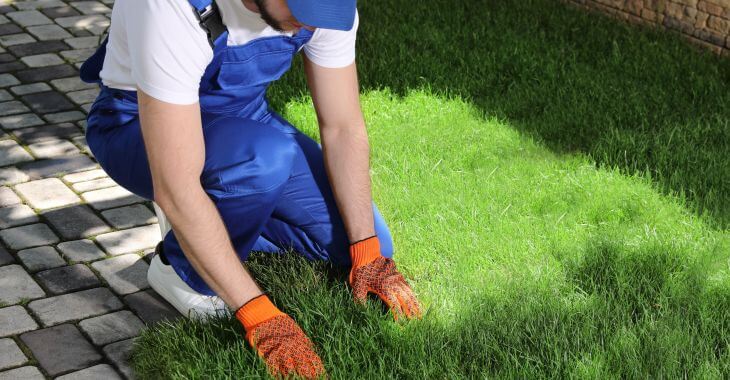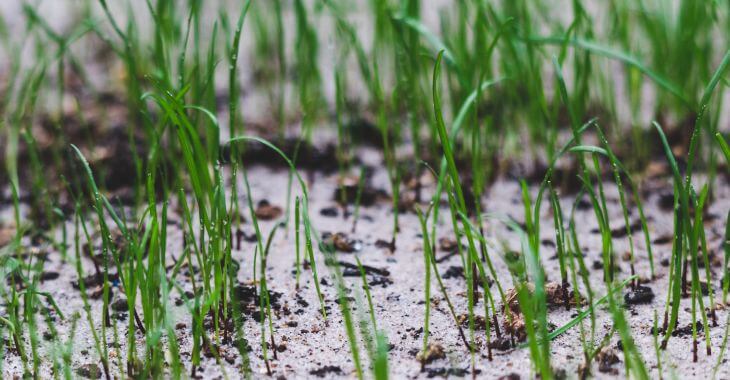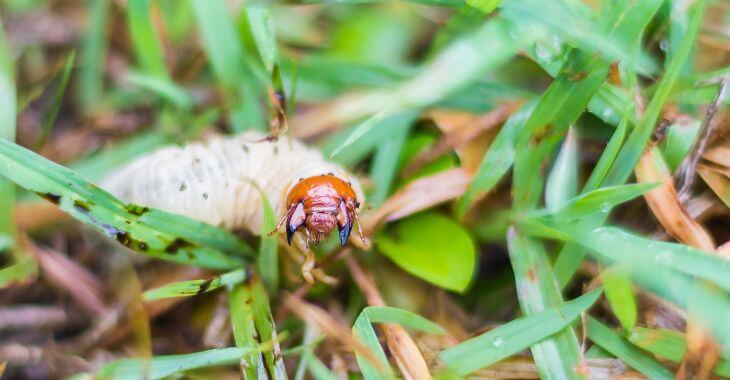What Are the Different Types of Sod?

Sod is the easiest way to plant a new lawn. Unlike planting grass seed and nurturing it for months, sod is mature turf grass that is ready to roll out onto prepared soil. If you are creating a new lawn with sod, you need to know the different types of sod available, and which will be best for your needs.
Warm and Cool Season Grasses
There are two main types of grass and sod – warm and cool. This refers to the climate where grass grows best – a warm season grass will thrive in warmer climates without severe winters. Cool season grasses are native to regions with cold winters where the grass is completely dormant during the winter.
When choosing sod for your new lawn, you will need either a cool or warm season grass. In most areas of the country, only one or the other is preferred. The northern half of the U.S. is primarily cool season grasses while the southern states are covered in warm season sod and grass.
Warm Season Types of Sod
If you live in the southern states, you will likely be choosing from the most popular options in warm season types of sod. These include Zoysia, Bermuda, Centipede and St. Augustine. Each has its own benefits and drawbacks, but all thrive in regions with mild winters and warmer summers.
- Zoysia Sod
- One of the most popular low-maintenance types of sod are of the zoysia variety. Native to Asia, zoysia grass has been widely used in the central and southern parts of the U.S. for over 100 years. Zoysia grass is ideal for hot, dry summers due to its excellent drought-resistance.
- Zoysia can be planted in shade or sun, and it can withstand heavy traffic. Due to its tough and lateral root system, it grows slowly and thickly for a beautiful, yet low maintenance, lawn. If you want a lush lawn that you do not need to mow often, Zoysia sod may be a wise choice.
- Centipede Sod
- Centipede grass has a wonderful array of assets if you want a warm-season sod that is great for high traffic or shaded areas. While it recovers well from injury or heat, it is not as drought resistant as some of the other warm-season grasses like zoysia or Bermuda – it will need more frequent summer watering.
- Centipede sod is best for the southeastern states in the U.S. – you will find it more often in Georgia, Florida and throughout the deep south over to Texas. It performs well in sandy soils, but it does require enough iron in the soil, which may mean more frequent fertilization of your turf.
- St. Augustine Sod
- From Hawaii and California to the Carolinas, St. Augustine is a popular warm-season grass all across the southern U.S. It is perennial, coming back each spring after a dormant winter. St. Augustine thrives near the coast, handling both direct sun and shade with equal tolerance.
- St. Augustine sod has a thicker blade of grass than many other warm-season grasses, with a unique blue-green color. It does well in high traffic areas and thrives in humid, coastal regions.
- Bermuda Sod
- Along with Zoysia, Bermuda is one of the most popular sod preferences in the warmer regions of the U.S. This is due to its drought tolerance and low maintenance traits, big selling points for homeowners who want less watering and mowing for their lawn.
- Bermuda grass is great for limiting weeds and thriving in hot temperatures due to its deep and strong root system. While it does require a little more maintenance than Zoysia grass, its beauty and durability make it a big seller when compared to different types of sod.
Cool Season Types of Sod
In the northern states, you need cool-season grass that can survive the freezing winter temperatures and germinate quickly in the spring. Two of the most popular types of cool-season sods used in the northern U.S. are bluegrass and fescue.
- Kentucky Bluegrass Sod
- If you want a hearty, perennial cool-season sod, Kentucky bluegrass may be right for your lawn. Bluegrass is heat-tolerant and can withstand direct sun and moderate shade. It is a gorgeous emerald green in color, which makes it wonderful for curb appeal.
- Kentucky bluegrass does require more maintenance than some of types of sod, but it does recover well from stress and damage.
- Tall Fescue Sod
- For the cooler climate areas, you will often see tall fescue sod planted in yards, parks and golf courses. It is heat and drought-resistant and it can hold up to heavy traffic. Homeowners and business owners appreciate its low maintenance traits throughout the summer season.
- The drawback to tall fescue grass and sod is that it grows in clumps, and it may need to be reseeded more often than other cool season grasses.

If you are planting a new lawn with sod, there are many different types of sod from which to choose. Talk to your local landscaping professional to find the best sod for your specific region and needs.

